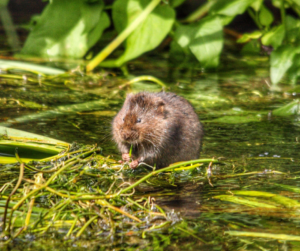Three Endangered UK Animal Species
The term ‘endangered species’ often leads people to think of tropical or sea animals, such as wales, giant tortoises or big cats. However, the UK does have several endangered species whose habitats are constantly being affected by developments. Please see below for some information about three of the lesser-known endangered UK animal species.
Three Endangered UK Animal Species
Capercaillies
Capercaillies are the largest members of the grouse family and are around the same size as a turkey. These birds originate from Scotland, but they also live in Northern England, specifically in pine woods or conifer plantations. In the last 20 years, the population of capercaillies has declined by as much as 50% (2,000 in 1990 down to 1,000 in 2016). The main reason for their decline is predators encroaching onto their habitat due to continued urbanisation; conservationists are keen to reverse this as soon as possible.
Water voles
Water voles may appear similar to rats, but they have rounder bodies, a shorter snout, and hairy tails. Voles live on grassy banks where they can feed on grass, tree bark and insects. The water vole population has decreased by 90% in the last 100 years (based on the number of sites where voles have been sighted). As such, they are currently classed as Britain’s most threatened mammal. Riverside properties have become ever more popular which has led to the destruction of the vole’s habitat. Pollution has also had a negative impact on waterways, resulting in less organic growth and affecting the vole’s food source.
Hazel dormice
Hazel dormice are nocturnal mice, with large black eyes and sandy, golden fur. These mice make their home in light woodland and old hedgerows. Like many rodents, they have a varied diet – feeding on seeds, flowers or insects, depending on the season. The hazel dormouse has also been referred to as being one of the ‘most endearing’ mice species, due to the large eyes and cute appearance. However, in the last 20 years, the population of these mice has dropped by 70%, with studies suggesting this is almost entirely down to habitat loss and climate change.
With these animal species, and more, facing extinction, an endangered species survey on your development may improve more crucial than ever. Please contact ProHort if you are considering, or are in the early stages of, a development and find out more information about our ecological services.
